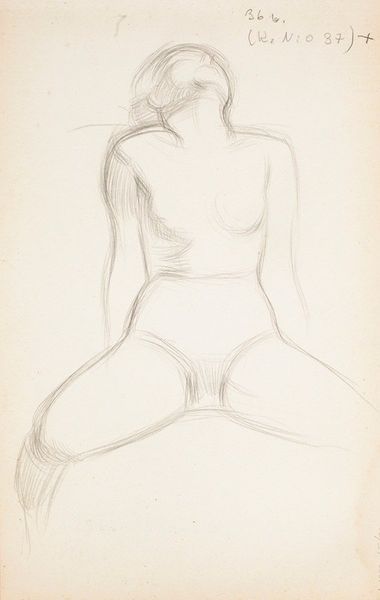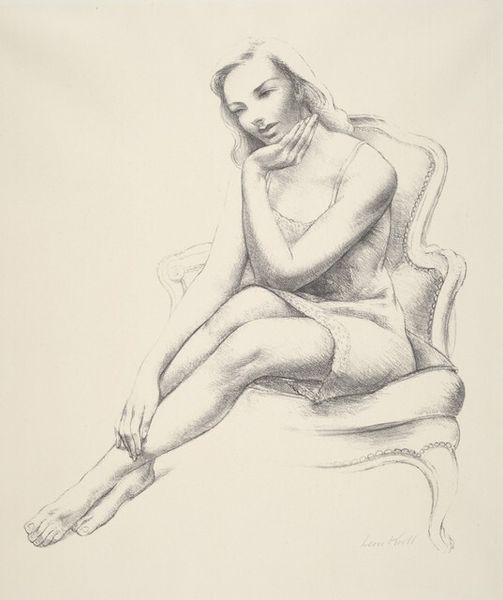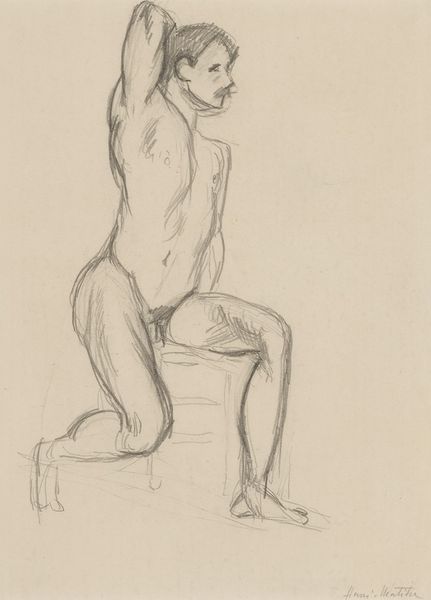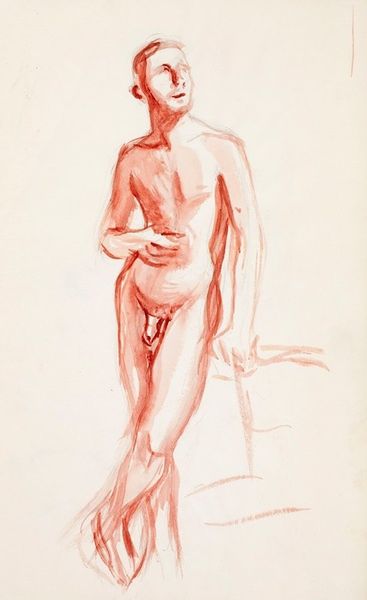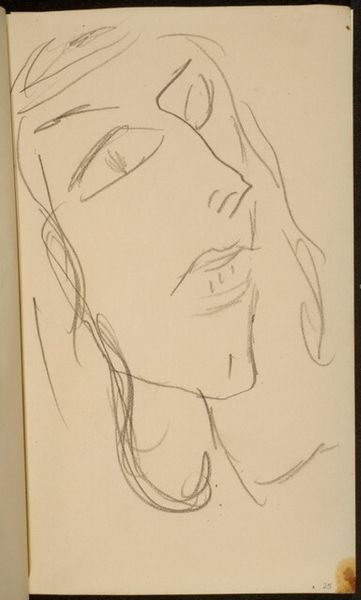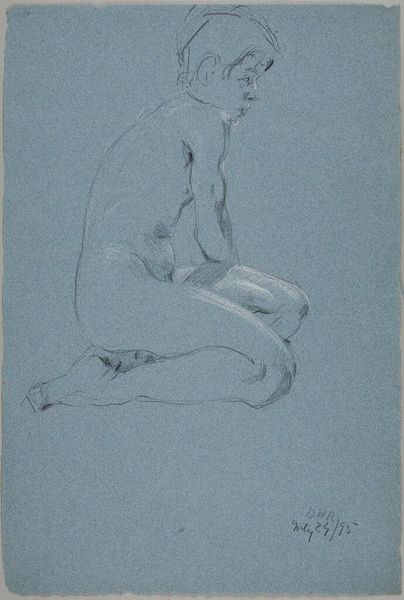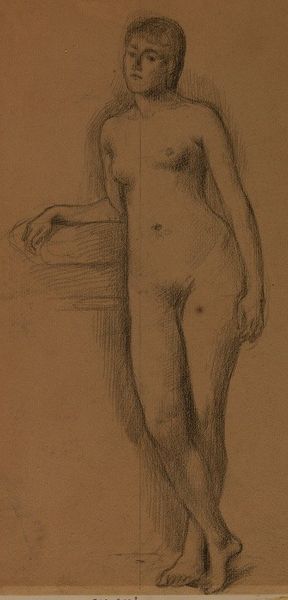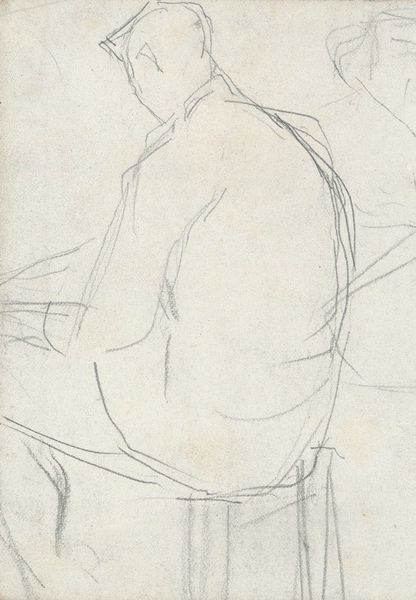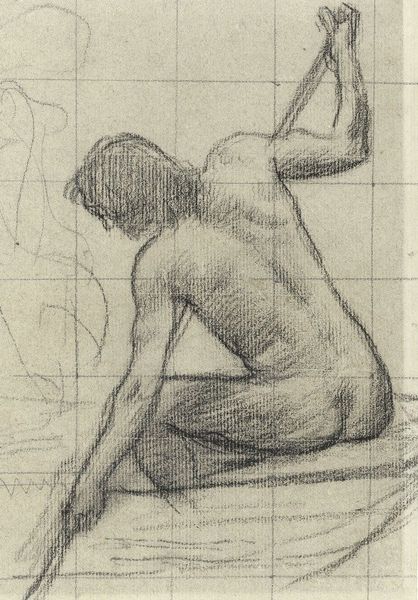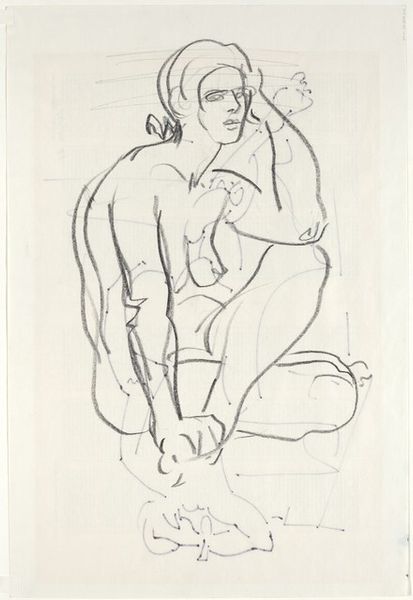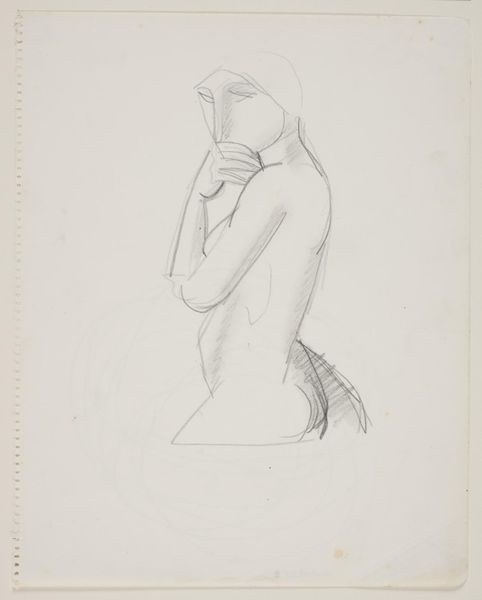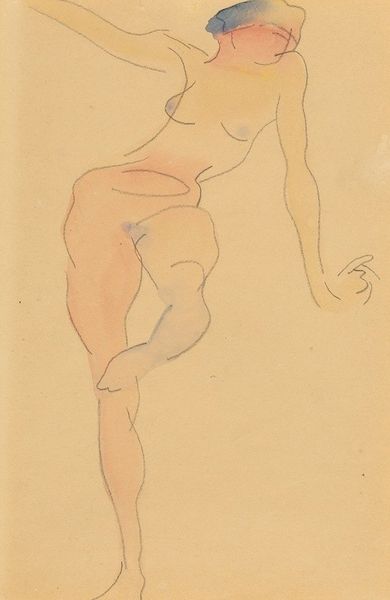
drawing, pencil
#
portrait
#
drawing
#
figuration
#
pencil
#
portrait drawing
#
nude
Copyright: Public Domain: Artvee
Curator: The stark simplicity is quite arresting, wouldn’t you agree? There's something inherently vulnerable about the figure. Editor: Yes, it does evoke a feeling of fragility. I'm immediately struck by the use of line here; it's so minimal yet communicates so much. Curator: We are looking at a drawing by Eero Järnefelt. Its title translates roughly to “Nude Model, probably 1909,” so it would have been completed somewhere between 1908 and 1909. It’s done in pencil, offering this immediacy we’re seeing. Editor: The choice of pencil really accentuates the preliminary nature of the work. It almost feels like a fleeting observation, captured before it could vanish. This rawness conveys an honesty and openness, unburdened by pretense. Did nude figure drawing become more prevalent as art academies developed in Europe, as access increased and ideas around the role of the female body in art expanded? Curator: Precisely. The sketch format implies accessibility, an interest in preliminary observation—but that doesn't negate that within academic institutions, male artists, critics, curators, and teachers used the nude to reproduce hierarchical conceptions of gender, race, and class. Editor: This form of observation almost gives the model authority in some respect. The slight lift of the face and simple hair arrangement have such significance; even though it appears quickly rendered, I want to meet her. This pose isn’t the typical classical female nude—how does the artist play into this? Curator: He does create a somewhat less conventional image. One could certainly read this work as part of the move towards modernising the figure in art. The loose lines might indicate Järnefelt’s awareness of emerging movements happening throughout Europe at the time. Editor: This isn't just a physical representation; it hints at an internal world, perhaps the sitter's introspection or contemplation, that we as viewers only catch glimpses of. The image also feels vulnerable given that it has been put on public display, raising inevitable questions regarding artistic control. Curator: Absolutely, and our viewing contributes to that complex history. This simple sketch, so quick and delicate, offers us more to contemplate than first meets the eye. Editor: Indeed. There is an unexpected depth within these slender pencil strokes, prompting questions about ourselves.
Comments
No comments
Be the first to comment and join the conversation on the ultimate creative platform.
